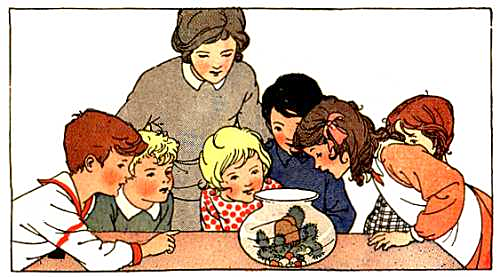". . .how much happier that man is who believes his native town to be the world, than he who aspires to become greater than his nature will allow."
Seems like a funny quote for a teacher to post.
Don't we want our students to learn of the world, to understand that their native town is not all there is?
And what's this about "than his nature will allow"?
Where does this quote come from, anyway?
Great questons. The kind of questions we want students asking. The kind that comes from mystery, omitted information, suspense. The kind that leads to deep understanding of a text like. . .drumroll. . .Frankenstein by Mary Shelley.
Okay, Frankenstein has been on my To-Read list for. . .a lifetime. After reading Romantic Outlaws: The Extraordinary Lives of Mary Wollstonecraft and Her Daughter Mary Shelley, I moved Frankenstein to my To-Read-This-Summer-If-I-Have-Time list. There it sat.
Then I went to the (most fun ever!) P20 Educator Conference this week and attended Laurie Roberts's fantastic session entitled "Why Don't They Read? Leveraging the Power of Mystery." I knew this would be a powerful session for me because
- Laurie is a fellow-Idaho Core Teacher Network alum
- My students need all the help they can get when it comes to reading literature
- I need all the help I can get to hook kids on reading
- I love improving the way I approach teaching literature
- Adding mystery and suspense to anything is always a good move
- Laurie is an awesome presenter (did I already mention that?)
Lo and behold, in her session, Laurie unfolded an adaptation of the Document-Based-Inquiry (DBI) process using none other than Mary Shelley's Frankenstein, now in its 200th year of publication. She engaged us with the text right off the bat by having us read the first letter Robert Walton writes to his sister in the opening pages of the novel.
How was that mysterious and/or suspenseful? The mystery was organic, since most of us had no context other than the paper in our hands and the vague notions of the plot of Frankenstein we had garnered from pop culture. Even as we read silently for eight full minutes of dense pre-Victorian text, the story began to work its magic on us. Laurie had provided a notecatcher for recording notices, wonders, and predictions, so we scribbled away as we read.
Why did his father not want him to go to sea? I wondered.
This text is straight-up Romantic Era literature, I noticed. The second paragraph is full of descriptions of nature, and the whole thing emphasizes emotion.
I'm a slow reader, so I didn't finish in eight minutes, but I couldn't wait to read the rest of it later. In the meantime, Laurie gave us time to discuss within small groups. My group included three other teachers, two of whom consider themselves avid readers and one who considers herself a reluctant reader. We took turns sharing what we'd noticed, wondered, and predicted while reading.
Each of us took something different away from the reading, while of course there were overlaps, too. I shared that I had at first struggled to figure out the object of Robert Walton's explorations. Another teacher shared that she had noticed the emotional highs and lows that Walton experienced. We nominated her to share out to the whole class when Laurie moved on to calling on each group.
As I listened to the many perspectives on the pages we had read, I thought how powerfully the process fostered peer-to-peer instruction. Laurie wasn't teaching us Frankenstein. We were teaching us Frankenstein.
Needless to say, I was mentally moving the novel to my Must-At-All-Costs-Read-As-Soon-As-I-Get-Home-From-This-Conference shelf!
In her AP Literature classes at Timberline High School in Boise, Laurie repeats the 8-minute reading, note-taking, and discussion process with the other letters from the prologue of the novel. Notecatchers typically aren't graded. Each new letter adds layers of meaning, new information, sparking new notices, wonders, and predictions.
Where's the monster? Isn't there suposed to be a monster?
This expedition is not going to end well.
I said at the beginning that this process is an adaptation of the DBI process. A typical Document-Based-Inquiry begins with accessible texts that may be in video, audio, or image form. The process then moves into more informative, more complex text forms that add the next layer of meaning. A third and final round of documents may include texts that help students synthesize what they have learned. What Laurie did with Frankenstein was get readers hooked on the text itself, rather than potentially distracting or boring them by lecturing about the author, showing a PowerPoint, or otherwise "introducing the text." There's no need. You can do that stuff later if you need to. The suspense is in the text, if we'll just tap into it.
Now I'm several chapters into the novel. The anticipation I built by reading Romantic Outlaws and attending Laurie's session is being fulfilled on every page. I only hope I can hook students on literature as effectively in my classroom.
Thanks, Laurie!
Thanks, Laurie!
Want more?
Follow Laurie on Twitter @lauriedroberts.
Here's an awesome exemplar DBI that a teacher in the Idaho Core Teacher Network created.
I share my process of revising my Band of Brothers unit, which includes a DBI, here.
Follow me, Amy Ballard, on Goodreads.
Follow me, Amy Ballard, on Goodreads.


